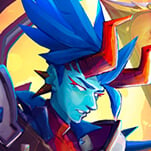Galaga by Michael Kimball

The newest offering from Boss Fight Books, Michael Kimball’s Galaga, is an exploration of Kimball’s personal history through the classic arcade game. Split up into 255 microchapters, the book weaves its way through intense personal stories from Kimball’s childhood, contemporary encounters with the game, analyses of the ways a “good” player might interact with the game, and factoids about various modifications of Galaga down through the years. Of course, most of these modifications are made up, as the author reveals over and over again, but that’s the least of Galaga’s problems.
I will be clear at the top here and say two things. One: I believe that Galaga is far and away the weakest release so far from Boss Fight Books’ generally strong opening catalog. Two: I found this book to be incredibly frustrating to both read and become engrossed by. Galaga was a book I couldn’t wait to get away from, and I found myself drifting, checking my email, and generally trying to disengage from the book constantly. One of the reasons for this might be the short, staccato chapters that mimic the stages of Galaga itself. More than that, the “types” of chapters repeat themselves very often, cycling through the history of Kimball, the history of Galaga, and play maneuvers. While the formal device of mimicking a short, repeated structure is clever, it reads like a gimmick, and I was quickly tired of it.
In fact, if there’s any word that describes Galaga better than “gimmick,” it has to be “indulgent.” When Kimball describes the act of playing Galaga, he goes in full-blast, narrating the smallest movements of both his hands and the sprites moving on screen. However, these fine descriptions never amount to anything. Instead, the reader is left with pages and pages of prose that lead nowhere, with no greater insight gained beyond the fact that the author can bloodlessly describe an arcade game.
-

-

-

-

-

-

-

-

-

-

-

-

-

-

-

-

-

-

-

-

-

-

-

-

-

-

-

-

-

-

-

-

-

-

-

-

-

-

-

-








































